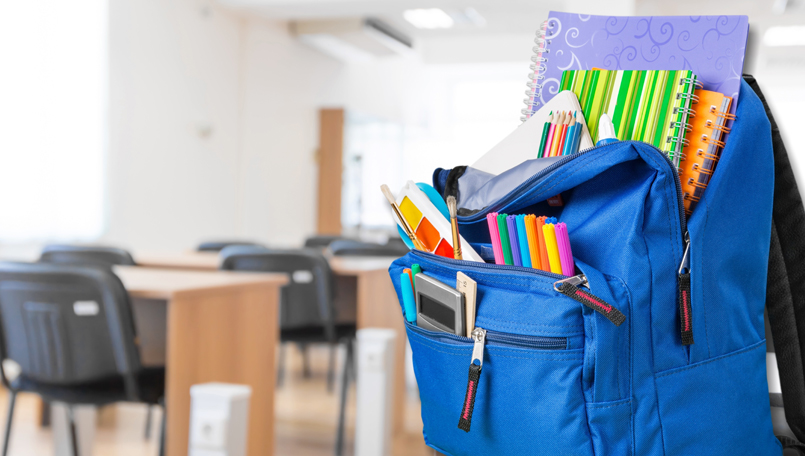
More than 40 million children in the United States carry school backpacks and more than half of them may be carrying too much weight.
Children carrying overloaded backpacks and improperly worn packs, according to U.S. and international studies, are likely to experience neck, shoulder, and back pain; adverse effects on posture and the developing spine; and compromised breathing and fatigue.
With the start of school, therapists from Beaumont Health’s Rehabilitation Services have joined forces with the American Occupational Therapy Association to weigh in on the issue of school backpacks and child health. Overloaded backpacks are not only uncomfortable, but can cause students’ long-term health problems.
“Heavy backpacks can cause many problems for school children, including back pain, neck pain, tingling arms and poor posture,” says Debbie Adsit, O.T.R., supervisor, Beaumont Children’s, Pediatric Rehabilitation Services. “It’s time to remind students, parents and educators the importance of packing it light and wearing it right.”
Parents can take steps to help children load and wear backpacks the right way to avoid health problems. The AOTA offers the following backpack tips:
- Never let a child carry more than 10 percent of his or her body weight. This means a child who weighs more than 100 pounds shouldn’t wear a loaded backpack heavier than 10 pounds.
- Load heaviest items closest to the child’s back.
- Arrange books and materials so they won’t slide around in the backpack.
- Check what your child carries to school and brings home. Make sure the items are necessary to the day’s activities.
- On days the backpack is too loaded, your child can hand carry a book or other item.
- If the backpack is too heavy, consider using a book bag on wheels.
- Both shoulder straps should always be worn. Wearing a pack slung over one shoulder can cause a child to lean to one side, curving the spine and causing pain or discomfort.
- Select a pack with well-padded should straps. Shoulders and necks have many blood vessels and nerves that can cause pain and tingling in the neck, arms and hands when too much pressure is applied.
- Adjust the shoulder straps so that the pack fits snugly to the child’s back.
- A pack that hangs loosely from the back can pull the child backwards and strain muscles.
- Wear the waist belt if the backpack has one. This helps distribute the pack’s weight more evenly.
- The bottom of the pack should rest in the curve of the lower back. It should never rest more than four inches below the child’s waistline.
- School backpacks come in different sizes for different ages. Choose the right size pack for your child’s back as well as one with enough room for necessary school items.
Today’s youth are already at great risk for neck and back problems and pain due to their tremendous amount of time on technology devices. Eliminating backpack strain is one less variable impacting their future posture concerns.
If the load is too heavy or the child is unable to carry books, Adsit suggests that parents ask teachers for two sets of books- one for school and one for home.
